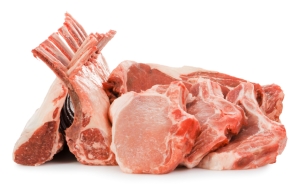“125 Best Foods for Men”
Last week in the Des Moines airport I picked up a copy of Men’s Health to read during my flights back to State College. It’s been awhile since I purchased a printed magazine because I usually read them on my iPad (yes, I’m one of those people) — but I can only take so much SkyMall reading during that pesky “below 10,000 feet no electronics” rule. I’m glad I picked up the mag because it featured a pullout poster identifying the “125 Best Foods For Men.”
My first observation was that everything on this list was in some way processed and pre-packaged. When I found the article online, the page tab read “The Best Packaged Foods…” Tallying through the list, 25 of the 125 products featured the word “organic” in the product name; however, in the brief note explaining how items were chosen it was never stated that a preference was given organic or otherwise “natural” items (but I have to wonder).
The last section of the list was the Proteins section. There are a few points of concern worth addressing:
(1) In the description of #119, the best ground turkey, one of the justifications included was that it had “no added hormones, steroids.” Point of clarification: Added hormones or steroids are not used in poultry production in the United States. This should be in fine print on the product label.
(2) #120 describes the bacon as having no added nitrates. Point of clarification: Sea salt and certain vegetable juice powders (commonly celery) are used as a naturally-occuring source of nitrate. This should also be included in the fine print on the product label. Even the corporate web site addresses this and says those ingredients are in their products. (Kudos for the thorough explanation, Applegate.)
(3) These are the only two items on the entire list that feature an absence claim (i.e. “No [this or that].”) Why not the other products? Not even dairy?


